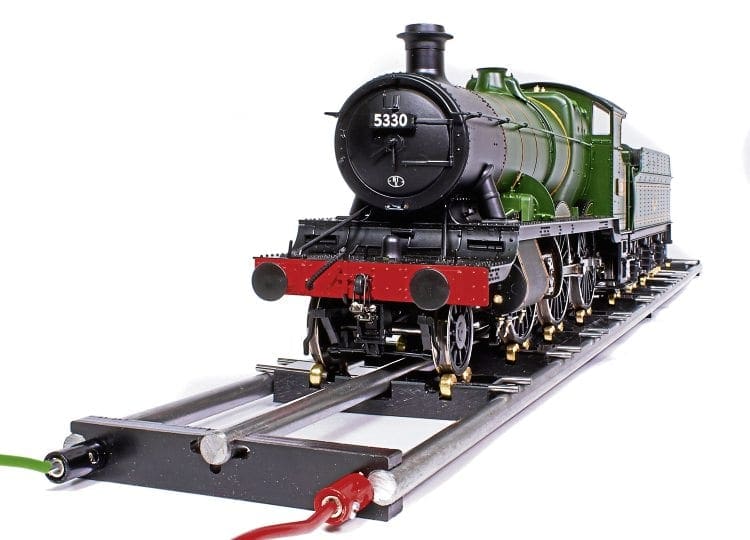How do we test large-scale locomotives submitted for review such as the Heljan 43XX Class locomotive? With a workbench rolling road, of course!
Large-scale models are collected by a lot of modellers who don’t have a layout on which to operate them, and that sometimes applies to the compilation of reviews here in the studio.
This is where the rolling road plays an important role in the testing, checking and running-in of models such as the recently reviewed Heljan ‘Large Prairie’ and 43XX Class locomotives.
KPF Zeller offers a fixed-rail rolling road for O gauge which is easy to set up on the workbench and provides the perfect static testing bed for large-scale models.

The featured KPF Zeller rolling road consists of three parallel rods – two outer support rods and one smaller inner rod with spacers at the end and in the middle, keeping the rods parallel to each other. Roller units or brackets sit neatly between the rods, with the roller axles resting on the rod for electrical conductivity and to support the roller brackets.
Power is supplied to each rod through a simple plug-and-socket arrangement at the end of the rolling road. The middle rod is provided not only for stability of the unit, but to supply power for three-rail O-gauge models too.

Power can be any conventional model railway supply, including traditional analogue, DCC and AC power.
Each roller bracket consists of an insulating block of hard and durable plastic fitted with two rollers on each side which rotate on steel axles.
Each one is positioned under a wheel of the locomotive, and power is conducted from the side rails through to the wheels via the axles and the rollers themselves.
When a tender is fitted with pick-ups, that too must be in contact with track power through roller brackets to represent the full current collection arrangement the model would use when operated on a layout.
For the full article, see the March 2019 edition of Modelling – available now!
For a complete list of stockists and how to get your copy, visit: www.railwaymagazinemodelling.co.uk/distributors
Advert



